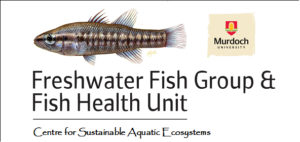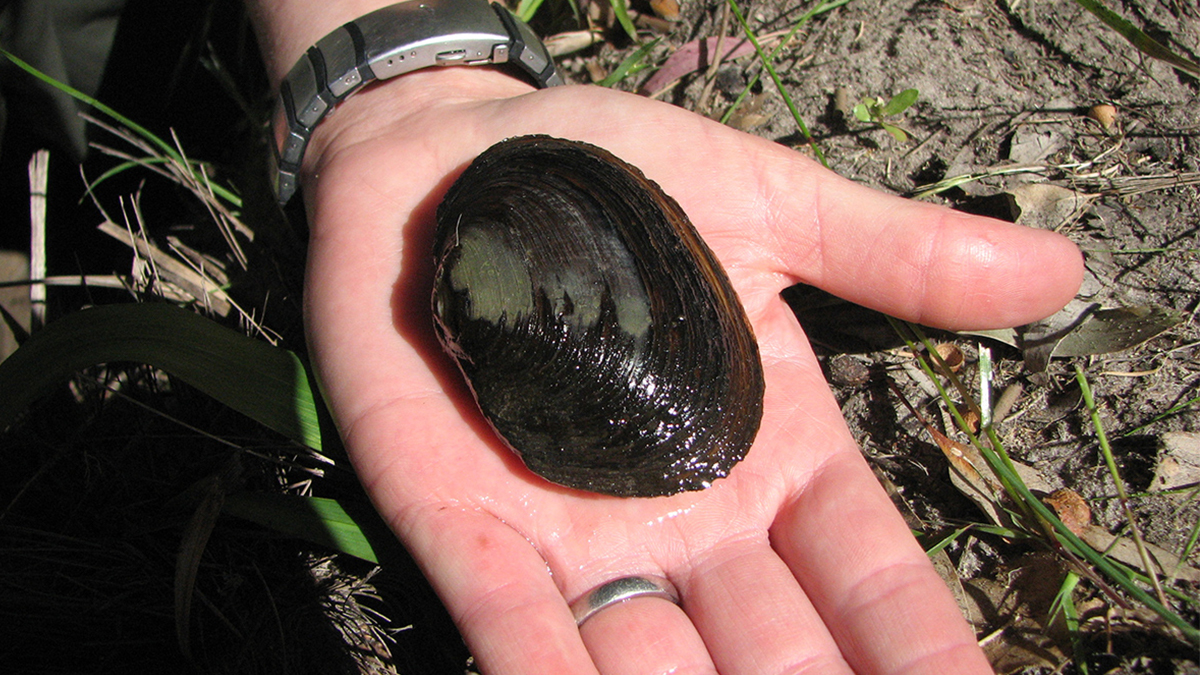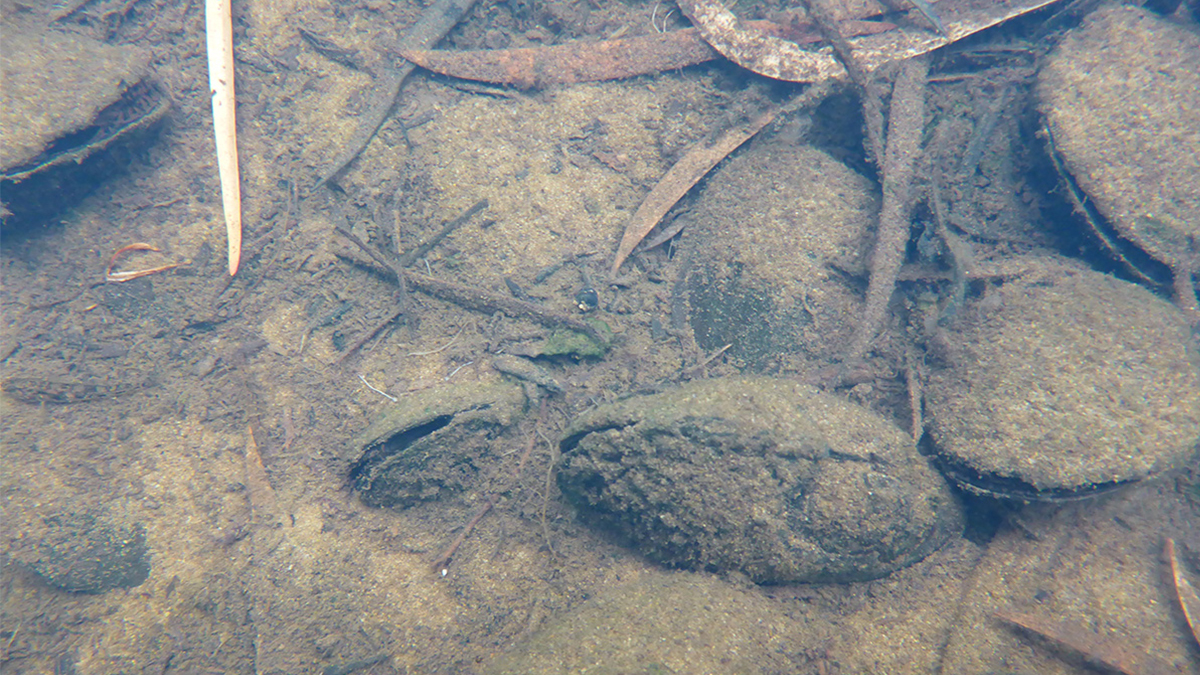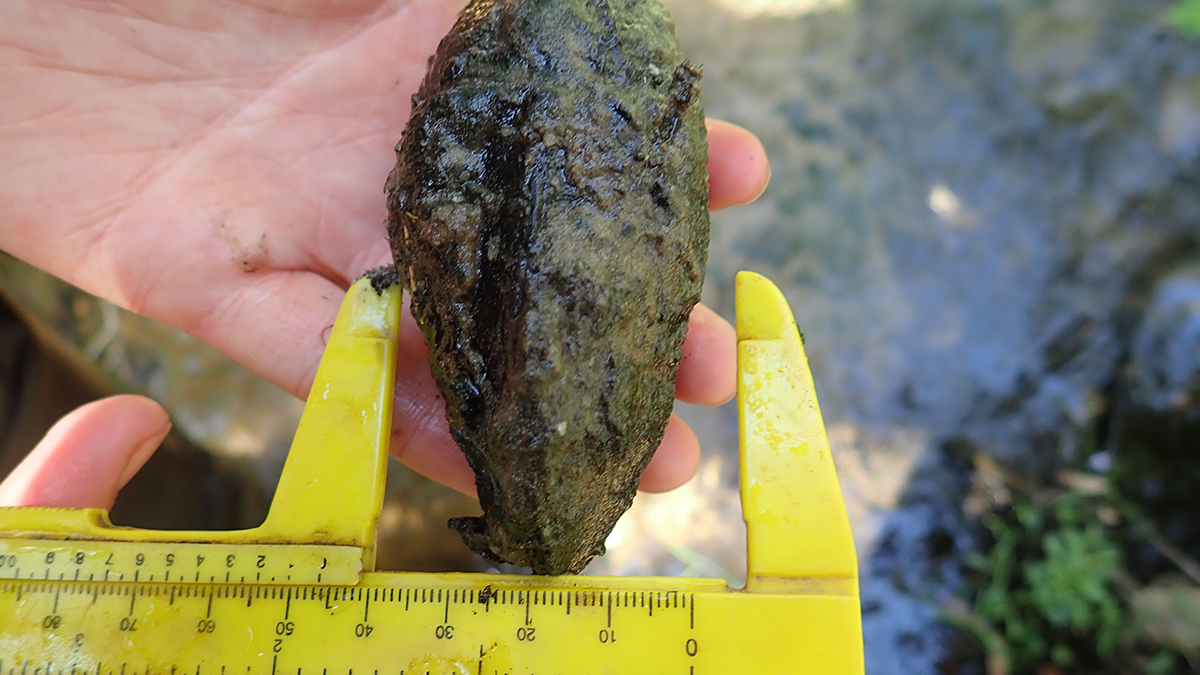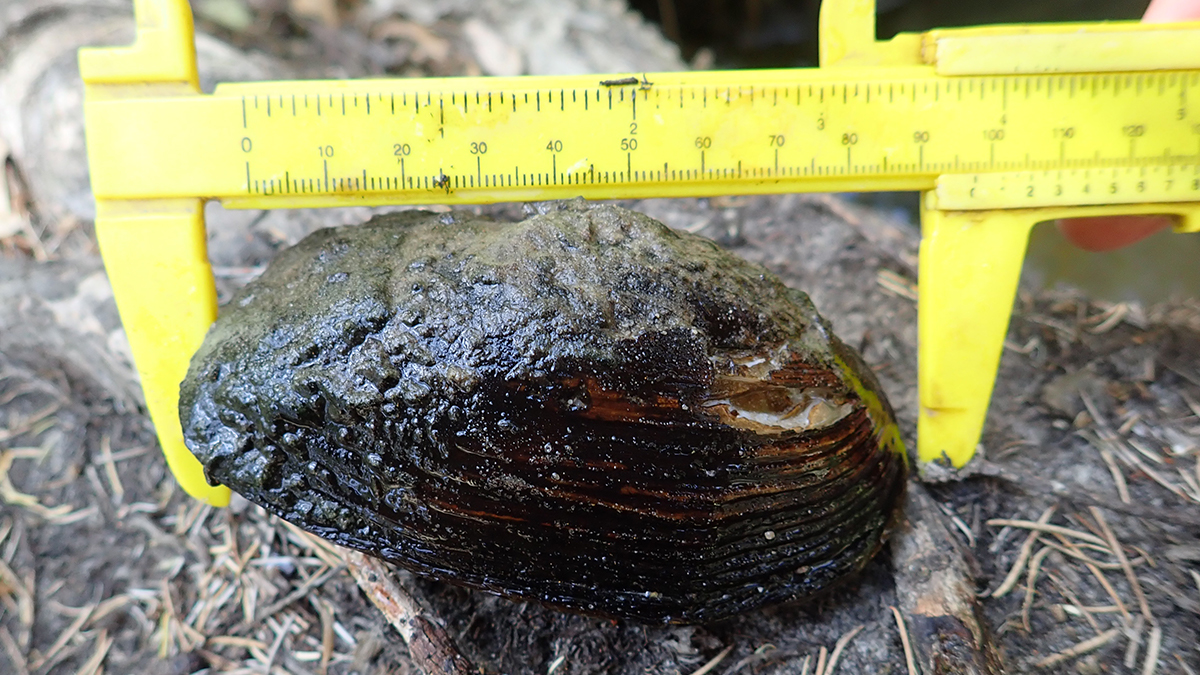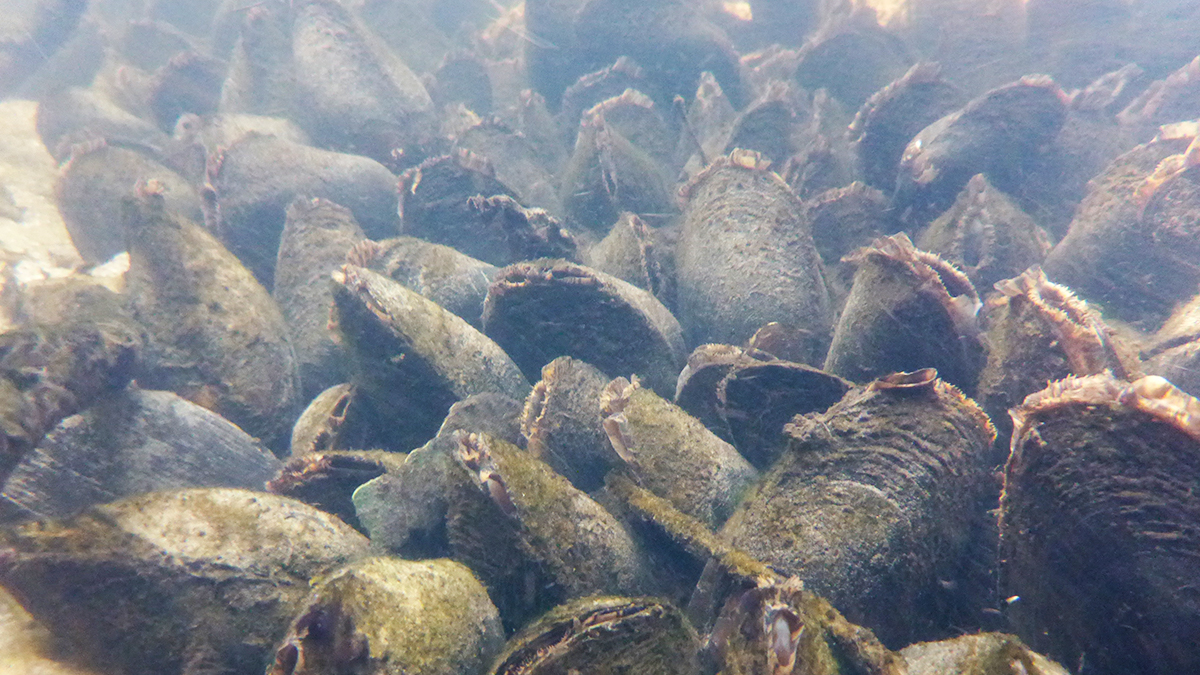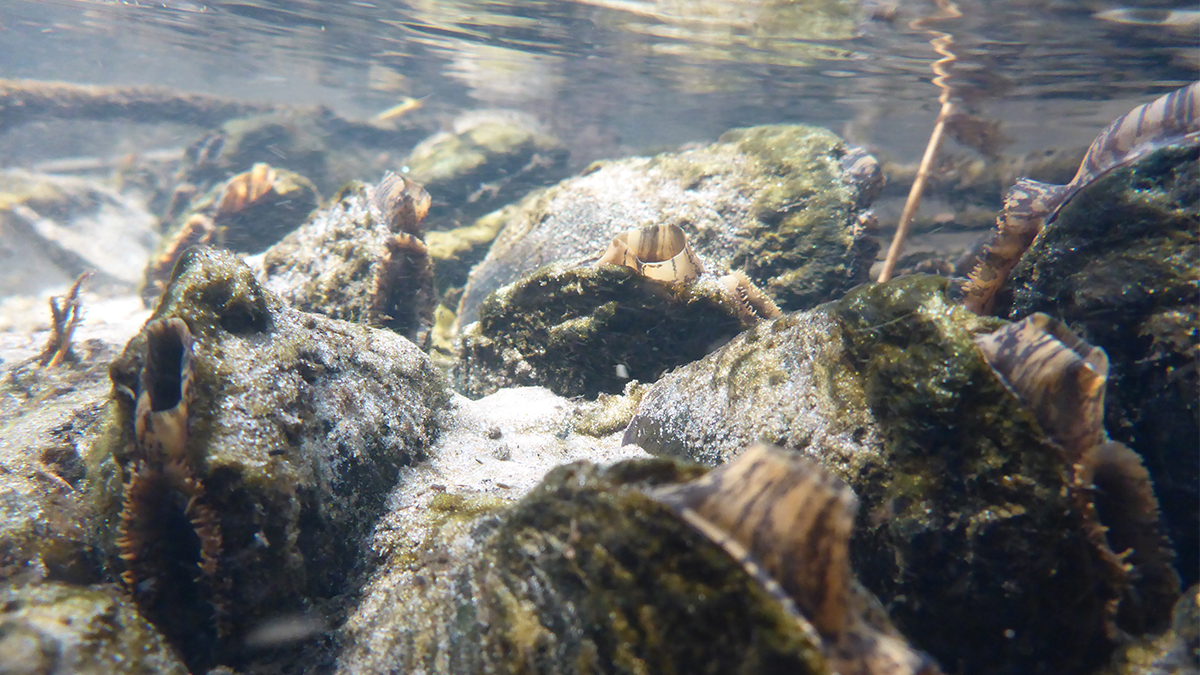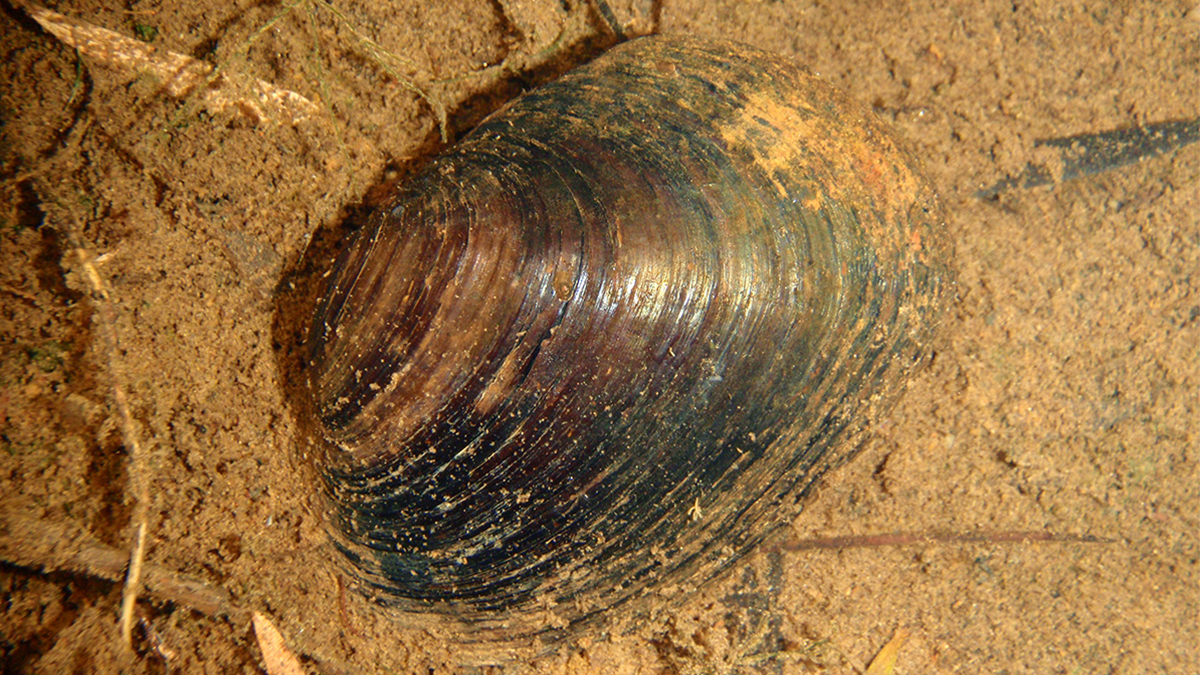Carter's freshwater mussel - Westralunio carteri
This page was created in partnership with the Freshwater Fish Group and Fish Health Unit at Murdoch University
Identification
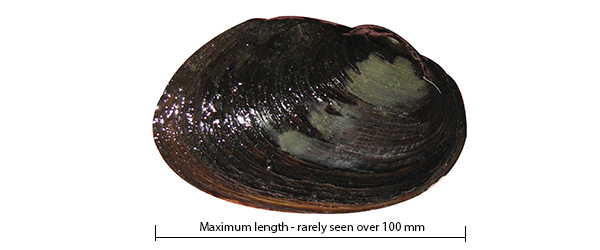
The only large bivalve inhabiting freshwaters of the south-west region, growing to over 100 mm, however usually seen between 40 and 80 mm. Note recent work has shown that there is a number of ecologically significant groups within the population of the South West (see Klunzinger et al, 2021).
Colour generally from black to dark brown through to reddish-brown, and often covered in a thin layer of periphytic growth (e.g. algae) which also binds silt.
Commonly has a worn down section at the thickest part of its shell, near the hinge, where the pearly, calcium-carbonate material that forms the shell can be seen.
Distribution
Coastal freshwater rivers and lakes between Moore River in the north and the Waychinicup River in the south.
Museum records indicate that the species may once have ranged as far north as the Gascoyne River and east to Esperance. A detailed study of the contemporary locations of the species can be found in Klunzinger et al. (2015). http://www.publish.csiro.au/zo/ZO15002
The study demonstrated that its range has declined by 49% in less than 50 years, principally because of secondary salinisation and reduced water flow from a drying climate.
Habitat
Occurs in greatest abundance in slower flowing waters where sediments are stable and soft enough to allow the species to burrow (<10 cm depth) but are usually visible from the surface; allowing the species to position themselves to best facilitate filter feeding. However, it also occupies lentic systems including large water supply dams and even on-stream farm dams.
Biology
A complex life cycle involving a parasitic larval stage. The larvae, or glochidia, attach to a fish host for several weeks to months (appears as small cyst typically on the fin or gills of fish), during which time they metamorphose into the juvenile form (resembling small adults). These drop off the fish host and the juvenile mussel then begins its life on the sediment.
The period of attachment to a fish host functions as an effective dispersal mechanism for this otherwise sessile animal. This highlights the importance of a robust ecological system for the survival of this species.
Low salinity tolerance (studies have shown stress response above 1.3 g/L, with mortality rates increasing rapidly to around 3.0 g/L where 95% mortality was shown in Klunzinger et al. 2015).
Conservation status
Threatened species: Listed as vulnerable under the Biodiversity Conservation Act 2016 (state, Western Australia), the Environment Protection and Biodiversity Conservation Act 1999 (Commonwealth) and the ICUN Redlist of Threatened Species 2020 (International).
Under the BC Act, Threatened species are listed in the category of critically endangered, endangered or vulnerable. Endangered species are considered to be “facing a very high risk of extinction in the wild in the near future, as determined in accordance with criteria set out in the ministerial guidelines”.
Further information
Contact the department’s River Science team, or the Murdoch Freshwater Fish Group via email: fish@murdoch.edu.au, or go to their website: www.freshwaterfishgroup.com
Recommended reading
